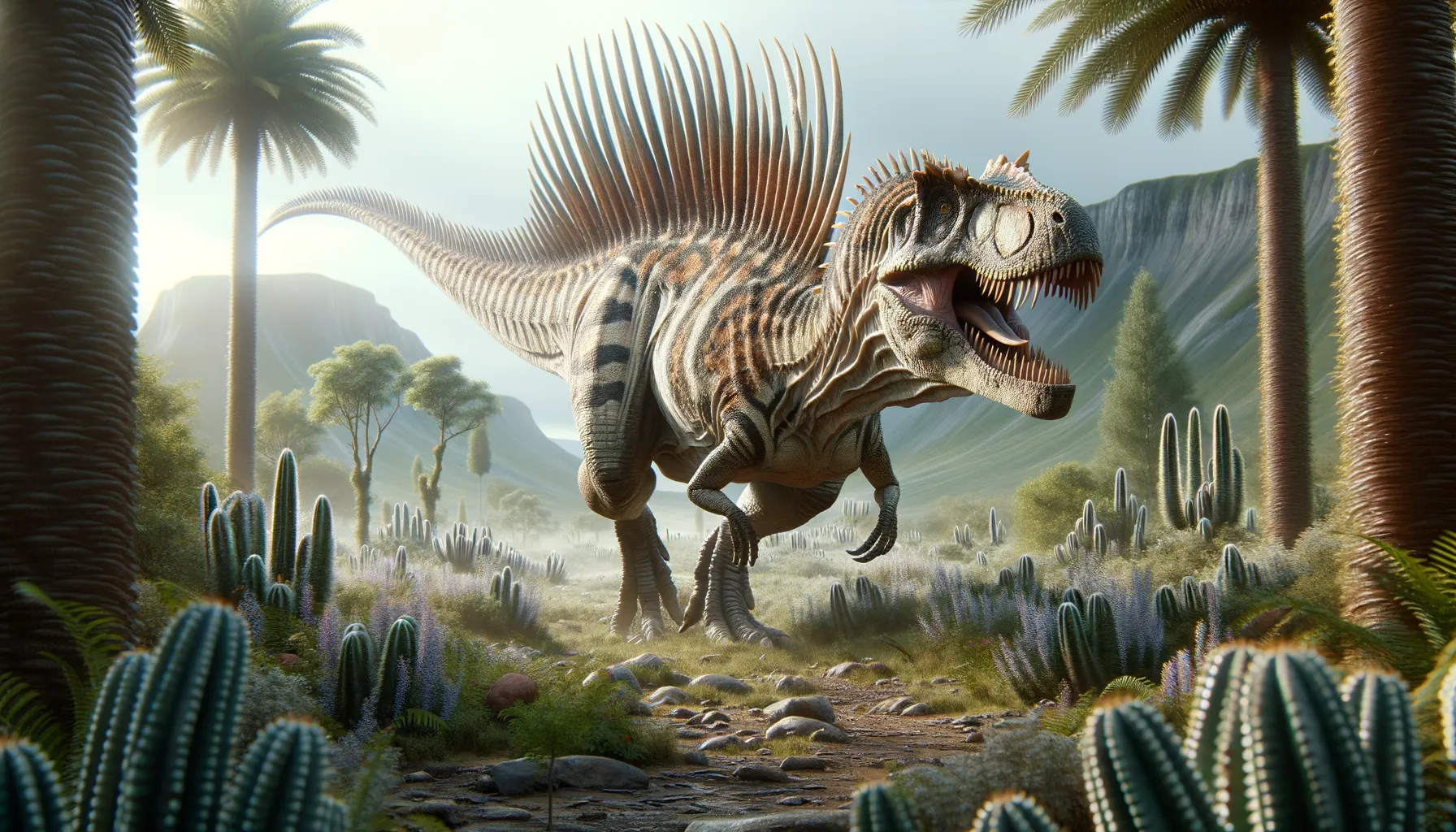
Becklespinax
A fierce predator with iconic back spines.
Period
Cretaceous
Length
Reached up to 7 meters in total length.
Height
Stood approximately 2 meters tall at the hip.
Weight
Estimated to weigh about 1,000 kilograms.
Becklespinax was a carnivorous theropod dinosaur from the Early Cretaceous period. Known for its distinctive vertebral spines, it likely resembled a smaller version of its relative, the more famous Spinosaurus. Its fossils were first discovered in southern England, providing important insights into the dinosaur fauna of Europe during this time period. This meat-eating predator likely played a significant role in its ecosystem, preying on smaller dinosaurs and possibly scavenging.
Diet
Becklespinax was a carnivore, primarily feeding on smaller dinosaurs and possibly other animals like early mammals and reptiles. Its sharp teeth and claws were adapted for hunting and tearing flesh, indicating a diet centered around meat consumption.
Hunting
As an apex predator of its time, Becklespinax employed stealth and speed to ambush its prey. It likely relied on its powerful legs for quick bursts of speed, capturing prey before they could escape.
Environmental challenges
Living during the Early Cretaceous, Becklespinax faced fluctuating climates and changing sea levels that altered its habitat. This era's landscape was a mix of forests and coastal regions, presenting challenges in locating prey and navigating its territory. Adaptations in hunting strategies and diet likely evolved in response to these changes, ensuring survival in a dynamic environment.
Speed
Likely moderate, balancing hunting and stealth.
Lifespan
Estimated to be around 20-30 years.
First discovery
First identified from remains found in England in the 19th century.
Fun Facts
- Becklespinax was a theropod dinosaur, known for its mysterious and fragmentary fossils.
- It roamed the Earth during the Early Cretaceous period, around 140 million years ago.
- This dinosaur is named after Samuel Beckles, a British paleontologist who discovered its fossils in England.
- Becklespinax had a distinctive series of tall vertebrae, though scientists debate if they supported a sail or hump.
- The exact appearance and size of Becklespinax remain uncertain due to the limited nature of the fossils.
- Becklespinax lived in what is now the United Kingdom, sharing its habitat with early flowering plants and primitive mammals.
Growth and Development
Growth in Becklespinax was likely rapid during early years, similar to other theropods, enabling individuals to reach a survival size quickly. Fossil evidence suggests that growth rates slowed as maturity approached, with skeletal structures strengthening to support adult weight and activity levels.
Habitat
Becklespinax inhabited areas that were rich with vegetation and had nearby water sources, such as rivers and coastal regions. These environments provided ample prey and facilitated its hunting lifestyle. The variety in its habitat suggests adaptability to both forested and open areas, aiding its survival.
Interaction with other species
Becklespinax likely competed with other carnivorous dinosaurs for food resources, establishing territorial boundaries. Interaction with herbivorous dinosaurs would have been primarily predator-prey driven, influencing local biodiversity. These interactions played a role in shaping the ecological dynamics around it.
Natural lifespan
Becklespinax is believed to have lived for around 20-30 years in the wild.
Reproduction
Reproduction in Becklespinax involved egg-laying, similar to other theropods. Nests were likely situated in secluded areas to protect from predators, with some degree of parental care suggested by similar species. This would increase the survival prospects of the young.
Social behaviour
Becklespinax might have exhibited solitary or loosely social behaviors, common among theropods, focusing interactions primarily around breeding and territorial disputes. While hunting, it mostly acted alone but could have participated in opportunistic group efforts for larger prey.
Fossil locations
Fossils of Becklespinax have been primarily found in the Wealden Group of England, shedding light on its presence in Early Cretaceous Europe. These findings are significant for understanding the distribution and diversification of theropods during this period. The discovery of vertebrae and other remains have contributed crucial information to reconstructing its appearance and lifestyle.
